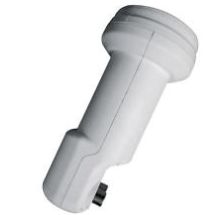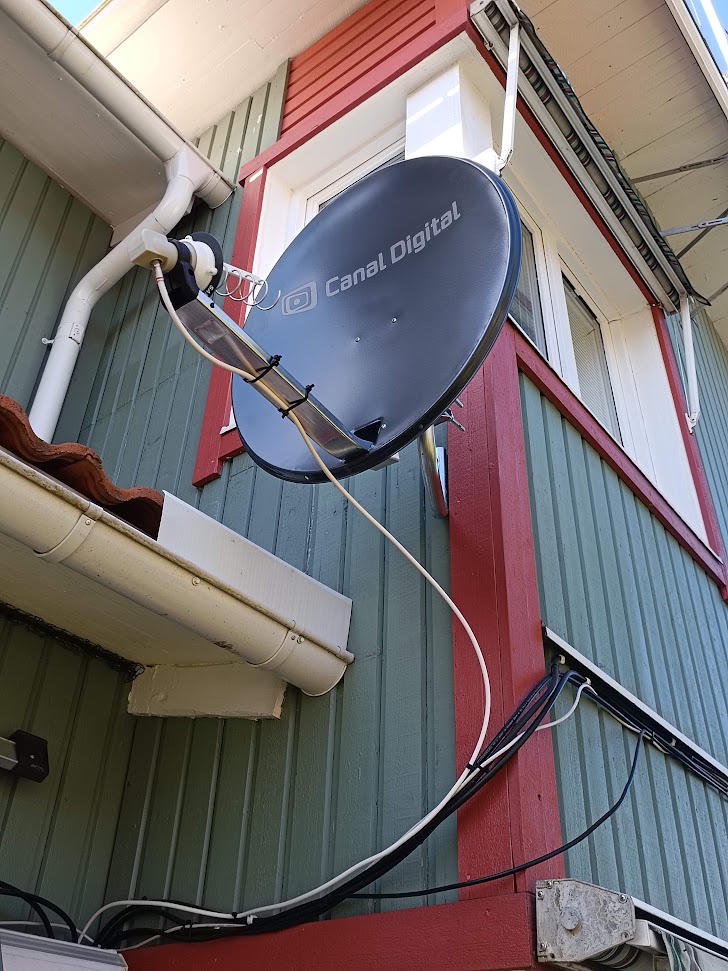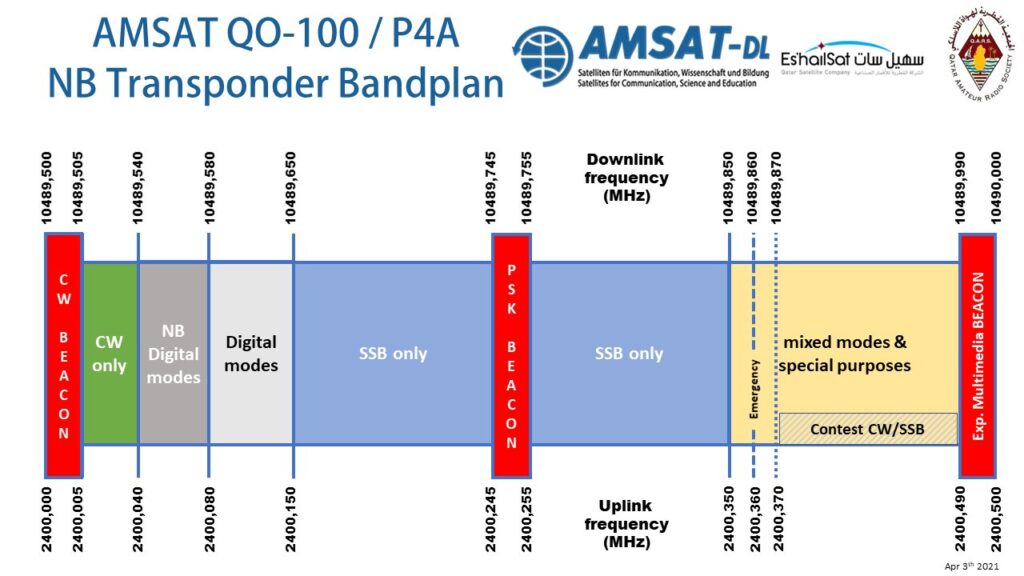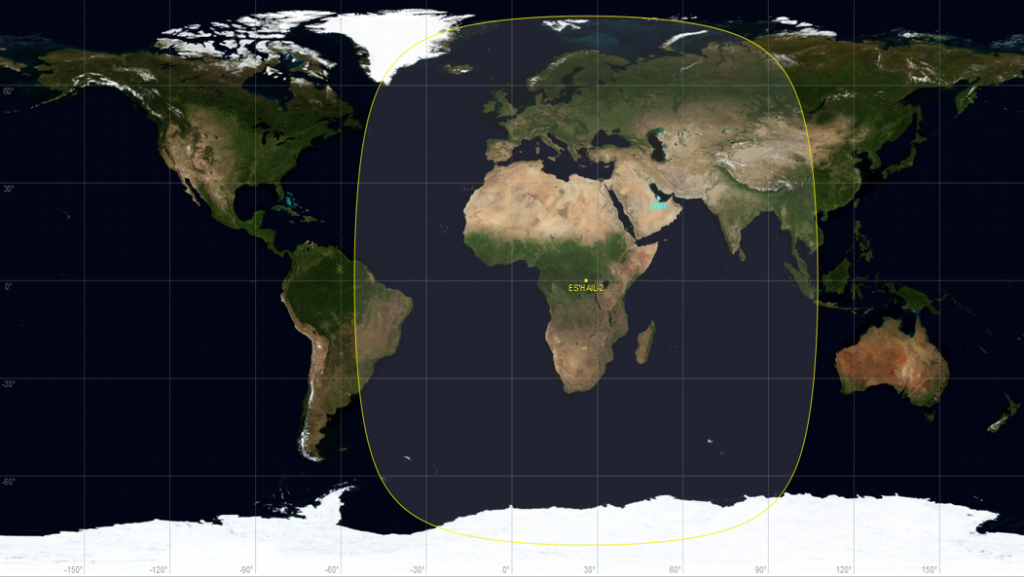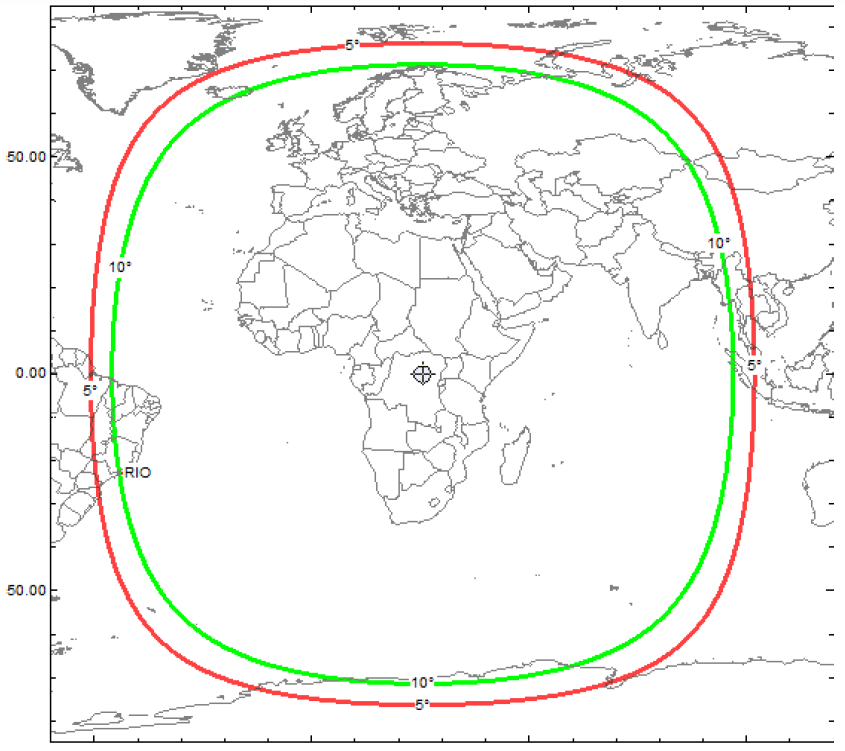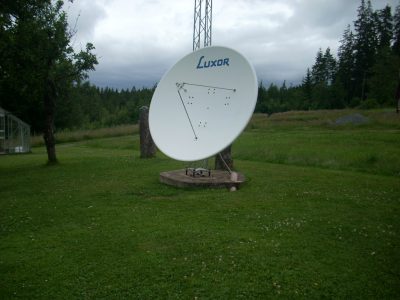Det verkar ju som att vi kan få upp en geostationär transponder på 25,5 grader öst under kommande vinter. Det har börjat att funderas rätt ordentligt på hur man löser nedlänken smidigast och det lutar rätt mkt åt begagnad satellit TV utrustning.
Enligt bifogade brev nedan så har en del planer på att använda även en satellit LNB för att sedan få ut en signal runt 739.55 MHz där man använder en SDR sticka och datorn för att lyssna.
Det första man kommer att tänka på är hur det blir med frekvensstabiliteten vid dom smalbandsmoder vi använder oss av?.
Bifogar lite text från en del tips som kommit senaste veckan.
Hi Stan (and others),
For the downlink I’m going to use an off-the-shelf dish and LNB coupled to
an SDR. The LNB should have high gain and be very frequency stable. The
Octagon Optima series LNB’s get a lot of praise and are very well suited
for this task, and they’re cheap too: I picked up one for about 15 dollars,
check ebay. The local oscillator is at 9750 MHz, so to receive the start of
the pass band at 10489.55 MHz the SDR should be tuned to 739.55 MHz, most
SDR’s should be capable of that. The pass band is a little bit below the
spec of the LNB which starts at 10700 MHz, but according to the
measurements done on the oe7forum linked below the -3 dB point of the LNB
is at 10048 MHz, so it should work just fine.
See also:
– Octagon LNB spec:
http://www.oe7forum.at/download/file.php?id=1363&mode=view
– Octagon LNB test: http://www.g4jnt.com/pll_lnb_tests.pdf
– Description of a 10 GHz ground station (in german unfortunately, but the
pictures say a lot) http://dl3jin.de/10ghz_rx.htm
– There is a lot of activity in Austria, maybe because satellite operation
with the current flock of birds is difficult when your horizon starts at 30
degrees elevation. 🙂 http://www.oe7forum.at/viewtopic.php?f=42&t=468
For the uplink it’s going to be something like a 70cm SSB-capable set, a 13
cm transverter, a PA if really necessary (but hopefully not when the
antenna gain and transverter output are high enough), all still to be
acquired.. The antenna is going to be a helical feed in the same dish as
the LNB, or maybe something like this, I’m not sure yet:
– Quad helix array (sorry, german again): http://dl3jin.de/13cm_helix.htm
73,
Rico PA3RVG
Samt en länk
Lite mera tankar
Having posted my setup at the end of last month and
seeing that my mail program wrapped line feeds, decreasing
readibility, here again my description and perspective.
Es’hail2 will not differ from any other geostationary broadcast satellite
in a sense that it’s a ‘full duplex’ repeater with some time delay.
I reckon this time delay inhibits actual full duplex operation,
just like the TV reporter for a ‘live stand up’ in the TV news via
a satellite link having an earplug with all audio except himself (‘N-1’).
For us amateurs this means no (significant) Doppler shift,
no LSB/USB issues etc.
Just point your dish once to 25.5E like (more than) thousands of
broadcast satellite viewers do (without technical knowledge at all 😉
Downlink (10.5 GHz):
For narrow band usage frequency and stability is paramount.
For 10.5 GHz we’re helped by the BC satellite industry, offering
cheap PLL LNB’s with ‘HDTV precision’.
Imho this precision needs to be increased by injection locking
the LNB PLL with e.g. a GPSDO due to the large multiplification
factor inside the LNB (e.g. for Octagon 361.111111).
Noise figures (NF) of these LNB’s are somewhat higher on 10.5 GHz
due to (steep) wave guide cut off, but still usable, compared to
the ease and price.
Uplink (2.4 GHz):
A 10W BUC (block up converter) suffices with published specs of
the 2.4 GHz receiver above in conjunction with a ca. 75cm dish here.
I’m currenly developing a simple 2.4 GHz BUC and will use old UMTS pallets
to amplify the desired 2400 MHz output.
Picture of my UMTS pallets: http://remco.org/umts.jpg
Bear in mind, S-band power is cheap 🙂
Antenna:
One dish, the larger the better. Not for the uplink, but for improving
dynamic range at the receiver (downlink) side.
I will use a surplus Triax 88cm dish (for portable / ‘umbrella’ use ;-),
f/D is around 0.6 (like most consumer BC satellite dishes).
Feed:
From my perspective the only challenge lies in the 2.4 GHz uplink.
That is, to make an S-band feed which phase center coincides with the
10.5 GHz LNB (which has its own ‘feed’ 😉
I’ve no fear for isolation issues due to the large frequency difference.
I am told that circular polarisation (CP) is ‘mandatory’ for S-band
uplinks in general but can’t find a verification for this,
perhaps somebody else?
Anyway, we’re amateurs and creative. So when RHCP uplink is too
difficult we make a linear antenna and increase uplink power with 3 dB 😉
But, I follow the published receiver specifications . . .
Last week I made a 6 turn LHCP 2.4 GHz helix.
(Rule of thumb seems to be 1 turn per 0.1 f/D)
Phase center of such a helix is a bit ‘foggy’ but from what I read lies
somewhere between the first and second turn.
I’ve some issues with matching it due to some mechanical boundary conditions
of the helix feed point in conjunction with the mounted downlink LNB and
relative position of the helix.
There is an additional ‘transmission line’ involved and
a ‘normal’ 1/4-wave stub doesn’t give me the desired return loss.
So, this needs some fiddling, perhaps with a gamma match or so.
My approach is, the downlink LNB is mounted in the dish ‘as usual’ and
looks through the centre of the uplink helix.
Pictures of the prototype feed arrangement can be provided soon.
They are on a camera not present here at this moment of writing.
Remco PA3FYM
Det här var några klipp från veckan som gått och vi ser fram mot nya intressanta lösningar.
Med vänlig hälsning Håkan

